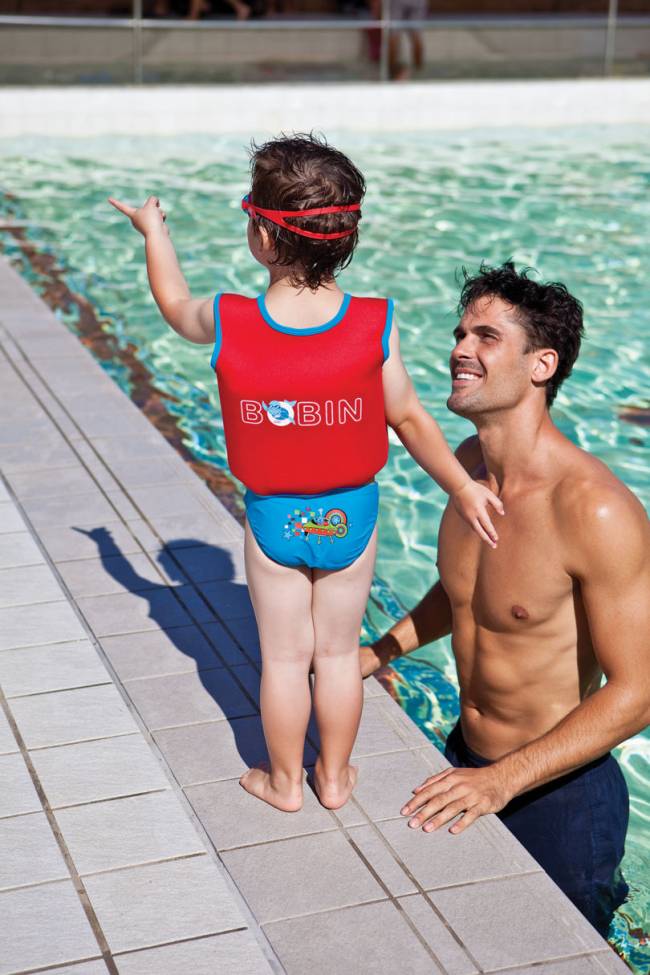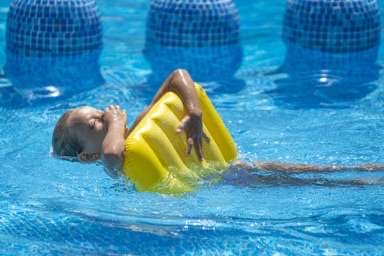A dip in the local pool, a splash in a back-garden inflatable or a good paddle in the sun-warmed sea, all these are so much more fun if everyone can get swimming…

Swimming is best learned during childhood, but it’s never too late to help kids learn. It teaches children how to be safe around water, helps them improve coordination from a young age and develops their learning skills. What’s more, it’s fun and is a great parent-child bonding exercise.
Preparing little ones for swimming lessons…
Preparation before their lesson
New environments can be daunting for children: it can pay to give them a head start before you take them to the pool. Zoggs ‘Learn to Swim’ Ambassador Simone Benhayon recommends starting with bath time. “The daily task of having a bath can begin to support your child in their first steps in taking swimming lessons. Get your little ones used to wearing their swimming costume and goggles in the bath so that when they get to the pool they can adapt more easily”.
What to pack
Unsure what to pack in your child’s swimming bag? Here’s a quick checklist*…
*Remember, it’s always best to be over prepared!
- Swimming costumes (for them and you!)
- Towel
- Armbands and floats
- Swimming hat
- Children’s swimming goggles
- Swimming games or toys
- Carrier bag for wet swimwear
- Shampoo & shower gel for rinsing off in the showers
- Drink and snack for afterwards
- A small coin purse with some change for lockers or emergencies (for older children)
- Mark or label clothing with your child’s name to help keep track of everything
And for babies, as well as all the above, include…
- Swim nappy: these fit over normal nappies and prevent leaking
- A warm bottle for after the swim (if you’re bottle-feeding)
- A hooded towel or towelling dressing gown for wrapping little ones up easily
- A snack if your baby has started solids (swimming is hungry work for all involved)
- Bath toys to help your baby relax
- Changing mat and nappy bag
First timers
- The first swim will be really memorable, there’s no need to be apprehensive. Remember to keep calm if your child begins to get upset, there’s no need to get embarrassed or worry that something’s wrong, just keep calm. Distract your child with swim toys, splash games or other things around you in the pool and they’ll soon forget whatever it was that made them upset.
- Make sure you arrive early to your child’s lesson, giving you lots of time to prepare. If possible, try to watch part of the lesson before so your little one can get an idea of what is going on and what to expect.
- Resist that urge to push them too far on their first visit. The aim is to build your child’s confidence in the water. To do this, you need to keep them close and reassure them as much as possible. Undoubtedly, there’ll be plenty more future opportunities to put that confidence to the test!
Improve your technique and help develop your child’s with “learn to swim” videos from the Zoggs YouTube channel.
For more tips to get your child swimming – click here.







